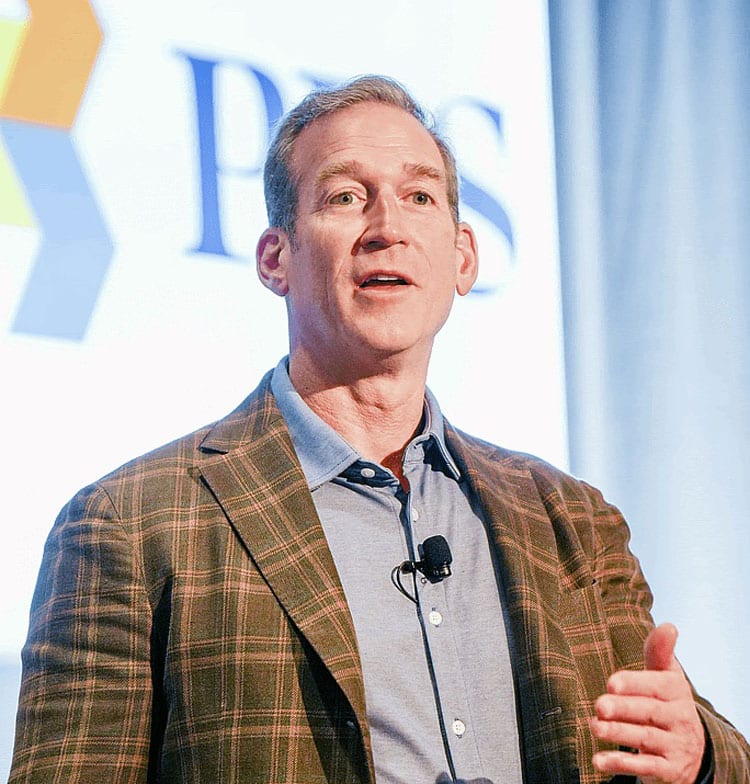Unified Commerce Solutions Key to Future of Business, Says Priority CEO Thomas Priore

One of the challenges faced by small to medium-sized businesses is maintaining sufficient cash flow. Businesses must receive customer payments on time in order to pay suppliers on time. They may also have difficulty securing loans and lines of credit that allow them to keep sufficient cash on hand. Digital platforms that address both of these areas are key to the future success of SMBs, says Priority CEO Thomas Priore.
Priority focuses on unified commerce solutions that combine both payments and banking-as-a-service products in a single platform. It’s an approach gaining momentum in the marketplace, with Priority reporting record earnings in 2023.
Thomas Priore, who co-founded Priority in 2005, said that company moves in the past few years have leveraged the latest technology to offer clients “an elegant, unified commerce experience.”
“Our results are demonstrating we’re achieving that goal. Priority has made the turn to delivering tech-enabled services that accelerate cash flow and optimize working capital through a powerful commerce platform to collect, store, lend and send money, allowing us to approach the marketplace in acquiring payables and banking solutions in a unique way,” he said.
What Is a Unified Commerce Solution?
Unified commerce solutions refer to integrated digital platforms that streamline various business operations into a single, cohesive system. These platforms provide tools and services that enable businesses to manage all aspects of sales, customer interactions, inventory and financial transactions in one place.
Priority’s platform also includes access to banking services, allowing businesses to secure financing directly through the same platform. It’s a service that can enhance financial flexibility and operational efficiency.
Unified commerce solutions aim to eliminate barriers between different sales channels and financial services, allowing businesses to provide a consistent and efficient customer experience across all touch points. This integration helps businesses operate more effectively while providing easier access to necessary financial resources.
Priority serves SMBs, B2B and enterprise clients. Products include CPX, an end-to-end B2B payments platform that automates 100% of accounts payable, and Plastiq, which allows businesses to gain access to low-cost working capital through a credit card. The company’s MX Merchant platform offers businesses one place to manage everything from billing and sales tracking to inventory and customer engagement.
With BaaS products added to these tools, Thomas Priore said, Priority has given business owners opportunities to address day-to-day challenges in ways that traditional banks do not provide.
Business owners are “frustrated with their bank. They’re frustrated with the way they pay bills and the way cash moves through their business. So, providing tailored or curated point-of-sale on the front end, and banking and payables products that work seamlessly with that experience, that’s the focal point,” Priore said.
A Growing Interest in Banking-as-a-Service
BaaS is when a third-party nonbank, often a fintech company such as Priority, offers banking products from financial institutions as well as other services. These products are part of a regulated financial infrastructure. Priority offers its BaaS products by working with diversified financial institutions and regional, state or community banks.
It’s a rapidly growing area. As Thomas Priore pointed out, many business owners are not satisfied with traditional banking services. That’s backed up by numbers from Deloitte, which reported that 30% of customers are considering switching banks. Deloitte also reported that financial institutions that focus on BaaS offerings see a doubling in return on average assets.
Thomas Priore said adding BaaS has greatly expanded what Priority can do for businesses, especially when combined with CPX, Merchant X and other Priority products. It gives business one platform for both payments and banking.
During the question and answer period in a recent company earnings call, Priore said that an SMB owner wants to get money as fast as possible. He used the example of a restaurant owner using Priority products.
“When you’re using our banking-as-a-service product alongside MX Merchant, your money shows up within minutes of your batch closure, even on a holiday or a weekend,” he said. “That doesn’t happen with any other provider in our space. As a restaurant owner, that’s gold to me. I’m getting my money on a Friday night, Saturday, Sunday or a holiday.
“And I can then utilize that cash to pay vendors with my debit card that’s attached to that account, or perhaps a virtual card that allows me to receive cash back.”
He added that when vendors don’t take cards, Priority clients can now use Plastiq, which Priority acquired in 2023. With Plastiq, the bill is immediately paid. Businesses pay a fee to Plastiq but don’t have to pay their credit card bill for, on average, 55 to 60 days, giving them financial flexibility.
The point, Thomas Priore said, is that Priority offers these different products and tools “that all work in harmony.” He added that opening a banking account with a Priority partner also provides businesses that are paying off debt the chance to start on a “consumer wellness journey” with the same company that gives them payments solutions.
“That really helps harmonize their financial well-being and their experience in one place,” said Thomas Priore. “We think that’s the most powerful advantage we have. I can tell you, it’s winning in the marketplace with a host of [independent software vendors] and enterprise customers who are saying, ‘Yes, I want to embed those types of solutions in my product experience, in my customer relationship.’ And we’re in an easy place to help them do that.”
Have you read?
Countries Most in Debt to the International Monetary Fund (IMF).
Most Successful Unicorn Startups.
$100 Billion Club: Richest People With The 12-Figure Fortunes.
Largest electricity consumers in the world, by country (in terawatt-hours).
Countries that Export the Most Goods and Services.
Bring the best of the CEOWORLD magazine's global journalism to audiences in the United States and around the world. - Add CEOWORLD magazine to your Google News feed.
Follow CEOWORLD magazine headlines on: Google News, LinkedIn, Twitter, and Facebook.
Copyright 2025 The CEOWORLD magazine. All rights reserved. This material (and any extract from it) must not be copied, redistributed or placed on any website, without CEOWORLD magazine' prior written consent. For media queries, please contact: info@ceoworld.biz








